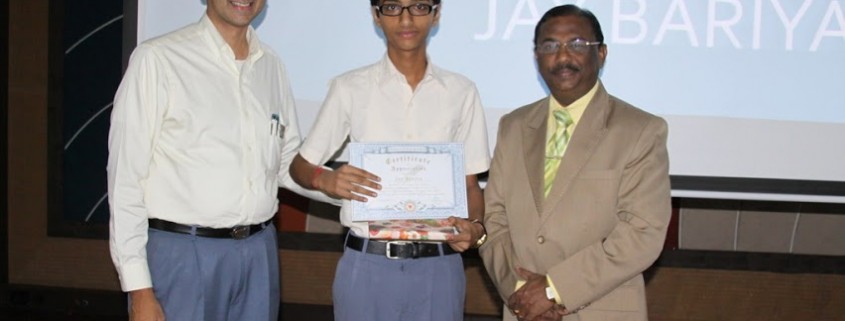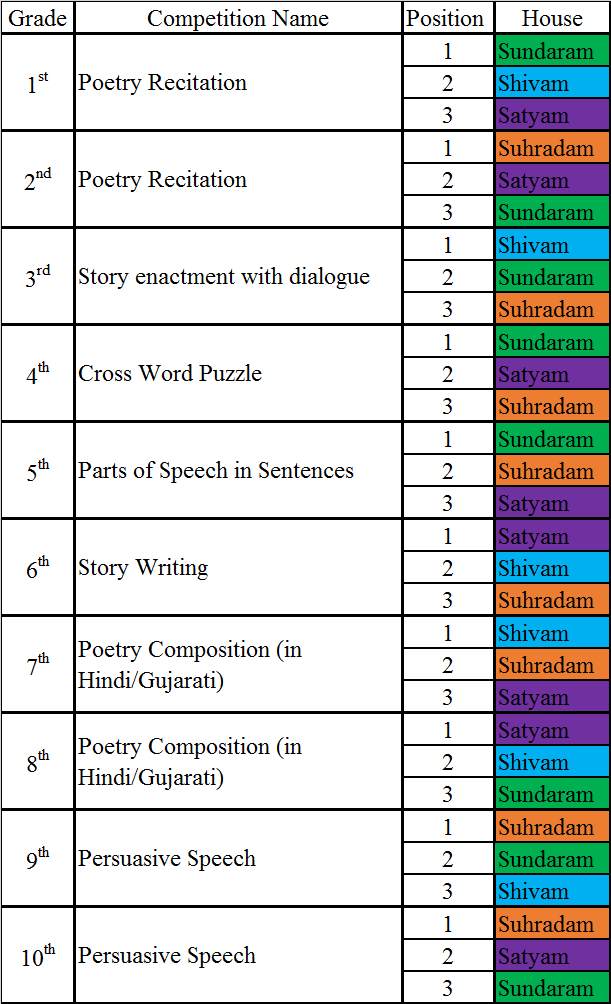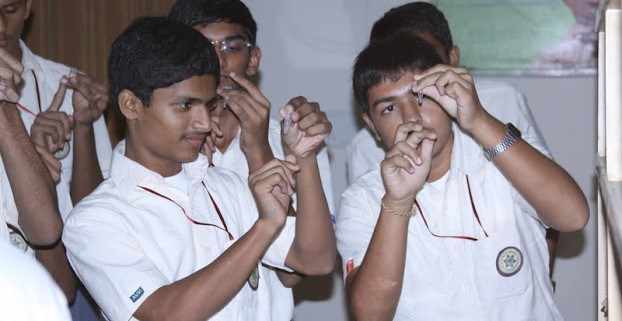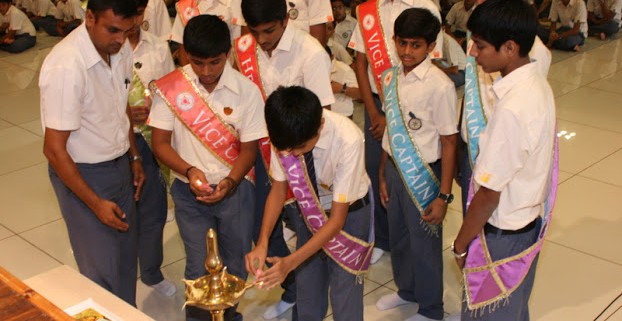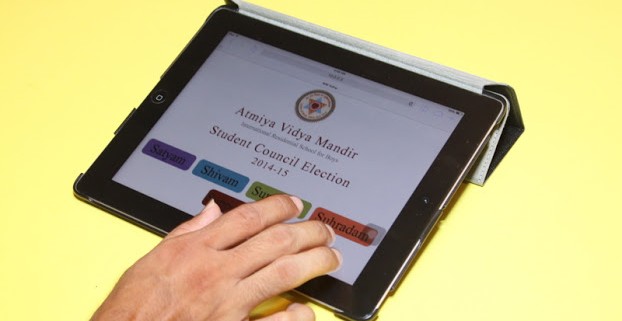GURUTSAV 2014: A National Level Essay Writing Competition
To highlight and make the students of our country understand and share the importance of their teachers in their lives. The Ministry of Human Resource Development (MHRD), Government of India, announced ‘Gurutsav 2014‘ a national level essay competition for the students of our country, conducted on 1st of September, 2014.
From Atmiya Vidya Mandir, seven students’ were registered for the competition in the 1st category. These students were allotted one hour from the announcement of the topic, to record their feelings when they got a good remark from their teacher in a two minute audio recording. Two students from grade five, two from grade four, and three from grade three participated in this group. Students’ got their topic at 9.40 am and they were given 30 minutes to prepare on the given topic. After which, with assistance of their teachers, students’ responses were recorded and sent successfully by 10:40 am.
One inspiring observation made by the teachers during the competition was that, one student remembered even the date and month the remark was given to him by his teacher. All students spoke filled with confidence about the remarks that they had got and how it brought changes in them. The competition was designed to encourage young students to voice their opinions about their teacher. The little kids participated enthusiastically in this competition.
The topic that was announced for the second category was “The year when I got a new teacher……” The word limit in this category was 500 words and the time allotted was one hour from the announcement of the topic. Students showed their passion for the competition and typed to their best, recollecting their past reminiscences about their new teacher. The students were not allowed to use reference books or the Internet for the competition. Four students from grade 6, four from grade 7, and six from grade 8 were registered for the competition. They were very excited for the competition and one could see the joy on their faces recollecting their memoirs about their teacher and penning them down. It turned out to be a challenge for the students as on one hand they were so very eager to keep writing about their experiences and on the other they had to conclude it in the given time frame.
From the high school section, a total of 25 students registered for the competition: three from grade 9, five from grade 10, eight from grade 11, and nine from grade 12. Their topic was – “I can never forget the particular teacher because.…..” The students in this category had to write a 1000 word essay in one and a half hours. In the first half hour of the competition, it was difficult to miss the expression of deep thought and contemplation on the faces of the participants and their body language. Thinking and taking notes in the book. Occasionally, the thoughts also brought a smile on their faces. Once they started writing their thoughts in the word processor they never looked back, engrossed, going back in time mentally and remembering how their teachers had helped them and made a positive impact on their life.
Finally, out of the total 1,18,622 entries, only 148 students were declared winners across all categories at the national level. Out of that, only 5 were declared winners from the state of Gujarat. One in junior category, two from middle school and two from high school. Out of the five winners selected from Gujarat only one participant was selected from the city of Surat.
We are very happy to announce that from the high school category, Jaybhai Bariya, a student of 11th Science from our school was declared a winner by the MHRD. His winning essay can be found here. A felicitation ceremony was organized in the school auditorium on 9th of September. Principal Mr Anthony of J. H. Ambani School was the chief guest of the function. He awarded Master Jay Bariya with a certificate, a book gift and a cash prize of Rs. 5,000 sent by MHRD, India. Mr Anthony on this occasion also shared his experience with the students of the school, highlighting the importance that teachers play in the life of the students.
The competition gave an excellent opportunity to the students, to remember the involvement and inspiration their teachers provide to them day in and day out.

